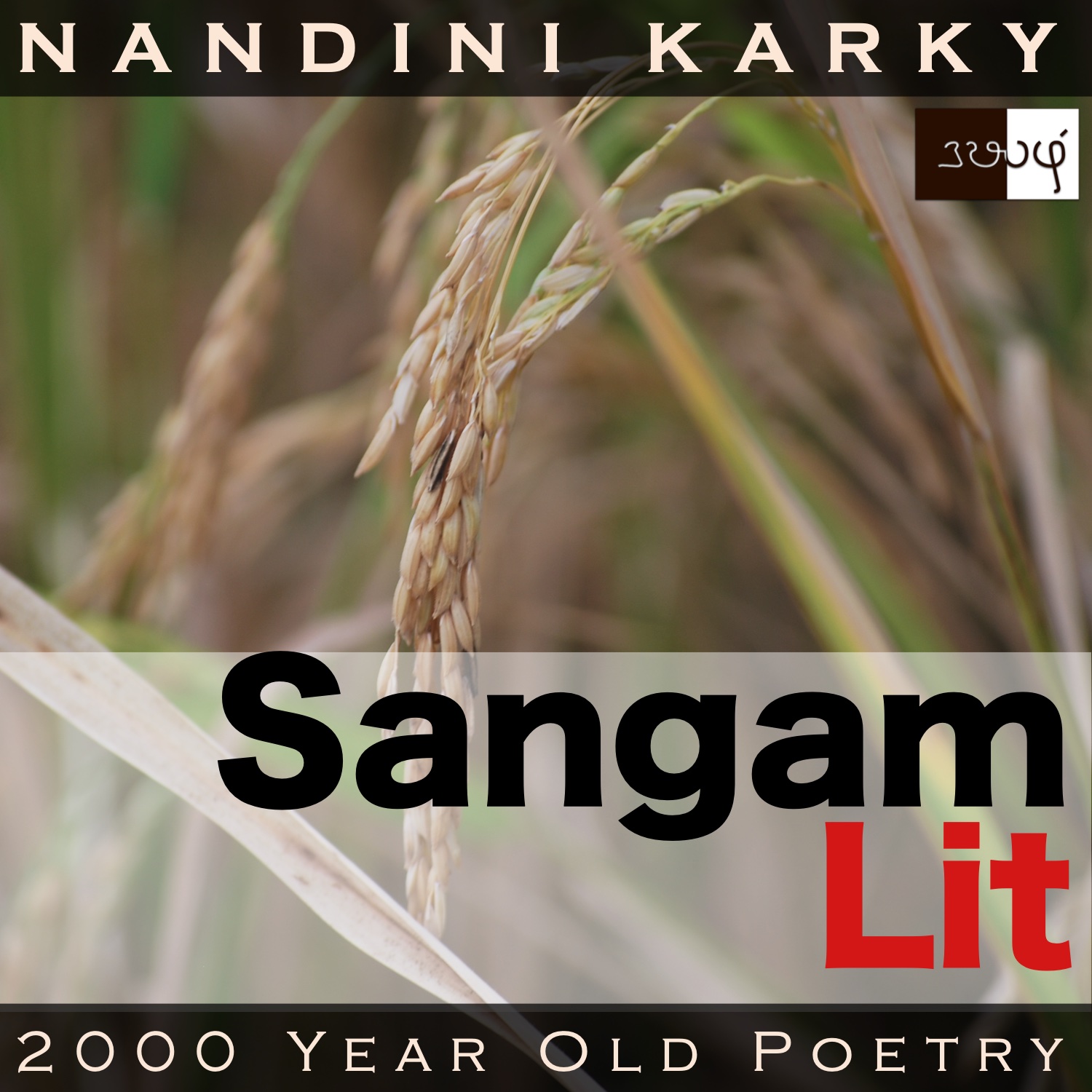Podcast: Play in new window | Download
Subscribe: Apple Podcasts | Spotify | Amazon Music | Android | iHeartRadio | Email | TuneIn | RSS | More

In this episode, we observe how a mountain farmer’s field speaks the hope in a lady’s heart, as portrayed in Sangam Literary work, Kurunthogai 133, penned by Uraiyoor Muthukannan Saathanaar. Set in the mountains of ‘Kurinji’, the verse speaks in the voice of the lady to her confidante, as the man delays seeking her hand in marriage.
புனவன் துடவைப் பொன்போல் சிறுதினை
கிளி குறைத்து உண்ட கூழை இருவி
பெரும் பெயல் உண்மையினே இலை ஒலித்தாங்கு, என்
உரம் செத்தும் உளெனே-தோழி!-என்
நலம் புதிது உண்ட புலம்பினானே.
Theft, loss and hope are the three threads that run through this verse! Reading the opening line ‘புனவன் துடவைப் பொன்போல் சிறுதினை’ meaning ‘the gold-like millets in the mountain farmer’s field’, made me think I have seen this before and found that Kurunthogai 105 opens with the exact same line. I wonder how people differentiated between these two poems in the Sangam era. Consider if it were a modern anthology, won’t editors today hesitate when including two different poems with the same opening line? Perhaps, it’s not how they open but how they end that matters. Turning away from these puzzles, we see how this verse is different in the words of the second line ‘கிளி குறைத்து உண்ட கூழை இருவி’ meaning ‘the short stalk, which was reduced by the parrots’ feeding’. Then, we turn to ‘பெரும் பெயல்’, ‘a heavy downpour’ and ‘இலை ஒலித்தல்’, ‘sprouting of leaves’, one of the happiest sights, especially if it happens on a sapling you planted. Ending with ‘புலம்பினானே’ meaning ‘in a state of loneliness’, the verse invites us to listen closely.
Parrots feeding on millets and fresh leaves sprouting seem to hold within, something more than a scene from nature. The context reveals that the man and lady had been leading a love relationship and that the man had been trysting with the lady for a long while. For a period of time, the man is kept away from seeing the lady. One day then, the lady says to her confidante, “In the mountain farmer’s field, after its gold-like little millets were eaten by the parrots, the diminished stalk bursts forth luxuriously with leaves because of the heavy rains. Akin to that, even though my strength is lost, I still live, my friend, even after he feasted upon my new beauty and left me in loneliness.” With these words, the lady explains to her friend how although she’s diminished by the man’s actions, she lives with the hope that he would soon seek her hand and bring her lasting joy.
Time to explore the nuances. The lady transports us to a mountain farmer’s field. Here, little millets are sprouting everywhere. She describes these millets as ‘gold-like’ and whether, she calls it so because of the yellowish hue of this crop or because it was like gold to that mountain farmer, is a debatable point. At this time, the lady beckons our attention to the pandemonium of parrots, not because this flock is creating an uproar but because that’s the collective noun for this bird that has delighted humans for ages. The parrots are intently feeding on the millets and running a time lapse video, the lady shows us how the stalks of the crops are reducing in height little by little. Must be a sad scene with millets flying away in the parrots’ mouth. But, worry not, says nature, and pours down on the land, making those shortened stalks sprout new leaves, shining with the blessing of raindrops.
After describing that sequence of events, the lady turns to her own state and says how, even though her strength is sapped, she still lives. Why is her strength in ruins? She explains that’s because the man had fed on her health and beauty and then, left her in loneliness. Now is the time to zoom on the symmetry and symbolism of these two scenes in the verse. On one side is a parrot eating the golden millets and on the other, the man feasting on the lady’s beauty. I want to pause here and mention a related thought. In many Tamil lyrics, the concept of ‘eating the beloved’ appears and in most cases, this beloved would be of the feminine gender as well. And no, these are not songs on misplaced cannibalism! I have always wondered about the origins of this thought and the clue lies hidden in this two-thousand-year-old verse. Feminine beauty seems to have been visualised as a food in the ancient past and it’s that echo we are still hearing in our modern songs.
Returning to the verse, we turn to the next layer in the parallel scenes. The previous layer of the millet’s shortened state after the parrots feeding and the lady’s diminished state after the man’s parting are direct similes. But, the lady has not ended with that particular scene as she also talks about the downpour and the sprouting of new leaves. When we explore the words of the verse, we seem to find no equivalent for this in the lady’s situation. That’s because we are only focusing with our eyes. When we go beyond words and look into the lady’s heart, there, like the new leaves sprouting after the rains, she holds the hope that joy will sprout in her life when her man arrives to shower the good tidings of marriage. Fascinating how, with such economy of words, abstract emotions are brought alive through the reflections from the real world!




Share your thoughts...